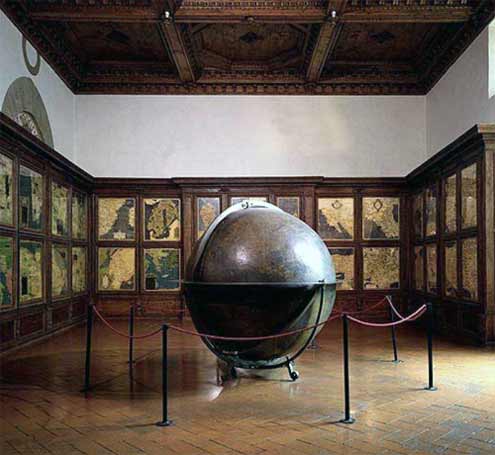Egnazio Danti, a Dominican monk and the cosmographer of the Grand Duke Cosimo I de’ Medici, created maps that decorated the walls of the Map Room of Palazzo Vecchio. Danti also worked as an instrument maker and his writings on the construction and use of the astrolabe and on astronomy were widely read. He was a lecturer of mathematics at the Studio Fiorentino, and created the gnomon, the astronomical quadrant, and the armillary sphere on the façade of the Church of the Santa Maria Novella.
Vasari designed the Geographic room with numerous fine cabinets that are decorated with extraordinary detailed maps of the world. Of the 53 maps eventually completed, 30 were painted by Danti (1564-1575) and 23 by Olivetan monk Stefano Bonsignori (1575-1586).Twenty-seven were taken from Ptolemy’s Geographia (2nd century AD), though they were updated to reflect contemporary writing, while the others, including those of America, were taken from a variety of more recent sources.
This project will restore Danti’s large terrestrial globe and the entire Geographical Room.
